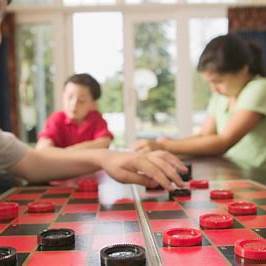Children with ADHD often struggle with attention, impulse control, and staying on task—but that doesn’t mean learning to focus has to be boring. In fact, the right games and activities can help develop these skills in a fun, low-pressure way that children actually enjoy.
Here are some ADHD-friendly games and activities that promote concentration, memory, and self-regulation.
Why Games Work for ADHD Support
Play-based learning taps into how children with ADHD naturally engage with the world:
- It reduces pressure and anxiety
- Increases dopamine, which boosts attention
- Builds executive function skills (like working memory, impulse control, and planning)
- Strengthens parent-child bonds
The goal isn’t just to “win” the game—it’s to develop critical skills through repetition and fun.
1. Simon Says (With a Twist)
This classic game builds:
- Listening skills
- Impulse control (only moving if “Simon says”)
- Attention to detail
You can add fun variations like animal movements or silly voices to keep it engaging.
2. Freeze Dance
Put on music and let your child dance freely. When the music stops, they must freeze:
- Teaches body control and self-awareness
- Helps with transitioning between movement and stillness
Make it extra fun with themed songs or dance styles!
3. Memory Matching Games
Use cards, pictures, or apps that challenge your child to remember and match pairs:
- Strengthens working memory
- Improves visual attention
You can make your own version using familiar images or school concepts.
4. Puzzle Building
Puzzles support:
- Patience
- Visual-spatial reasoning
- Sustained focus
Start with simpler puzzles and gradually increase complexity as attention span grows.
5. Jenga or Stacking Blocks
Games like Jenga encourage:
- Strategic thinking
- Fine motor skills
- Waiting and planning before acting
Turn-taking with family members adds an important social regulation element.
6. Board Games with Structure
Choose games with:
- Simple rules
- Predictable rounds
- Short playtimes (10–20 minutes)
Examples:
- Uno (colors and numbers, plus turn-taking)
- Connect 4 (visual strategy)
- Zingo (a faster-paced version of Bingo)
Avoid games with complex rules or long wait times.
7. Scavenger Hunts
Create indoor or outdoor hunts with clues to find items:
- Builds focus and planning
- Encourages sustained attention on a task
- Offers movement, which is helpful for ADHD brains
Add a timer or “mission” theme to increase engagement.
8. Yoga or Animal Pose Games
Turn yoga into a game:
- “Be a cat, stretch like a snake, balance like a flamingo”
- Hold poses for a count of 5 or 10
This blends movement, imagination, and body control—all great for self-regulation.
9. DIY Obstacle Courses
Use pillows, chairs, and tape to create an at-home obstacle course:
- Improves sequencing and planning
- Encourages physical activity
- Promotes persistence and direction-following
Have your child build the course, too—designing engages the brain even more.
10. Breathing and Focus Apps
Some apps turn mindfulness and breathing into fun, interactive games:
- Breathe, Think, Do with Sesame
- GoNoodle
- Breathr
These apps combine screen time with calming activities—great for transitions or downtime.
Tips for Success:
- Keep activities short and upbeat (10–15 minutes)
- Join your child in play—it increases connection and motivation
- Praise effort over performance: “You really focused on that game!”
Final Thought: Learning Through Play is Powerful
Children with ADHD may struggle with traditional classroom tasks, but they often excel in environments where learning is active, engaging, and fun. With the right games and activities, you can build focus, boost self-control, and help your child discover their strengths—all while having a great time together.
These moments of play aren’t just fun—they’re powerful tools for development and connection.
